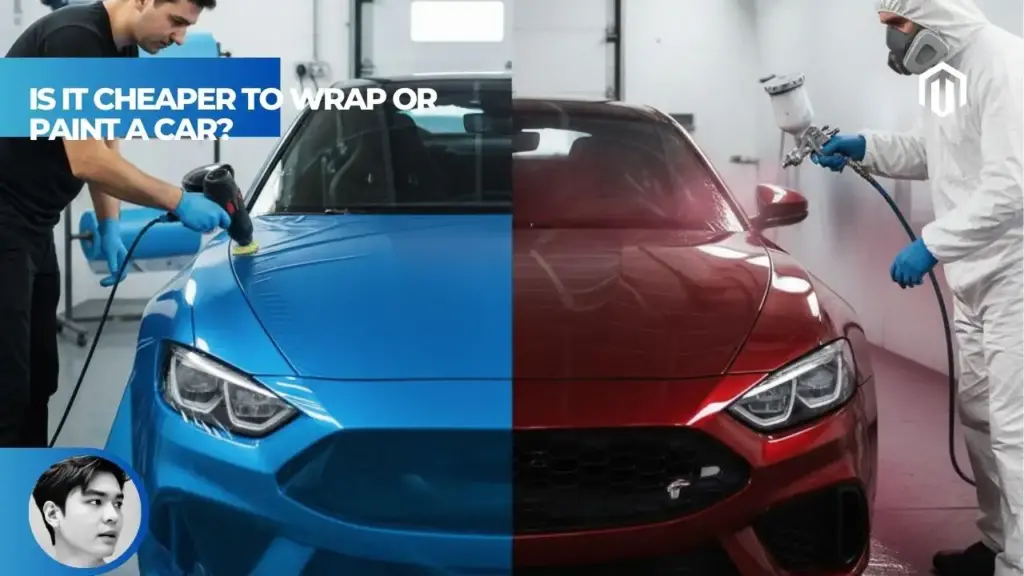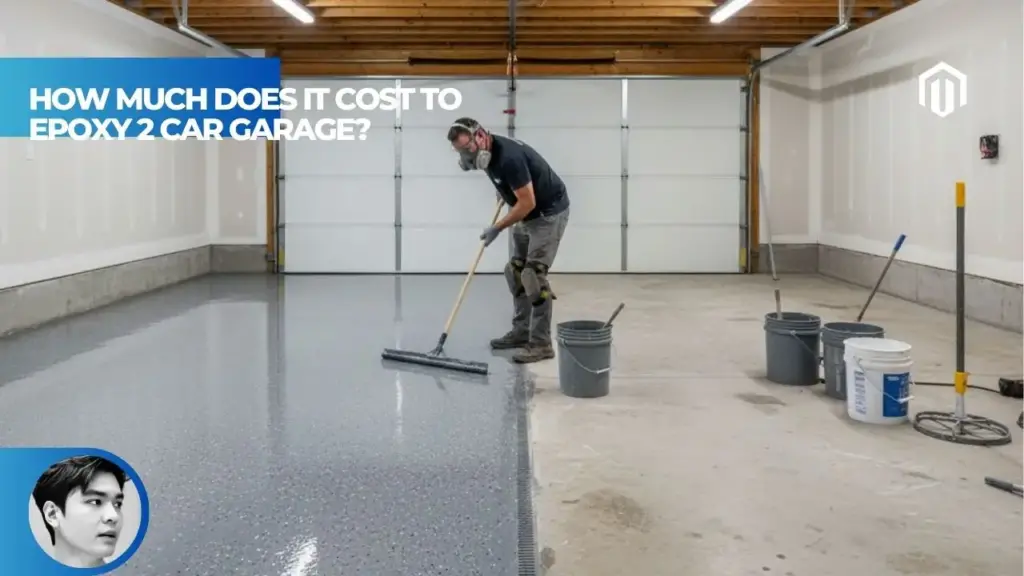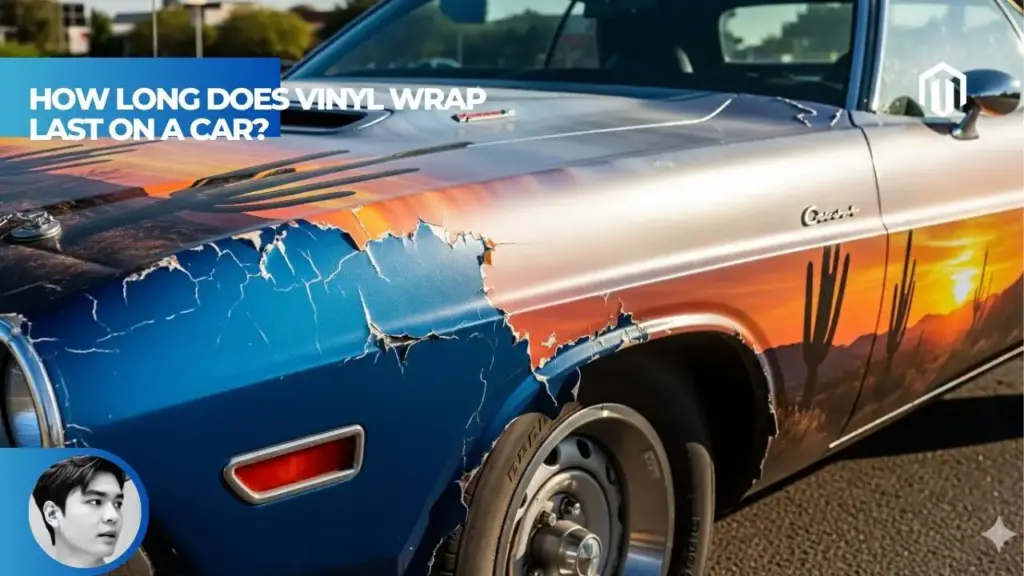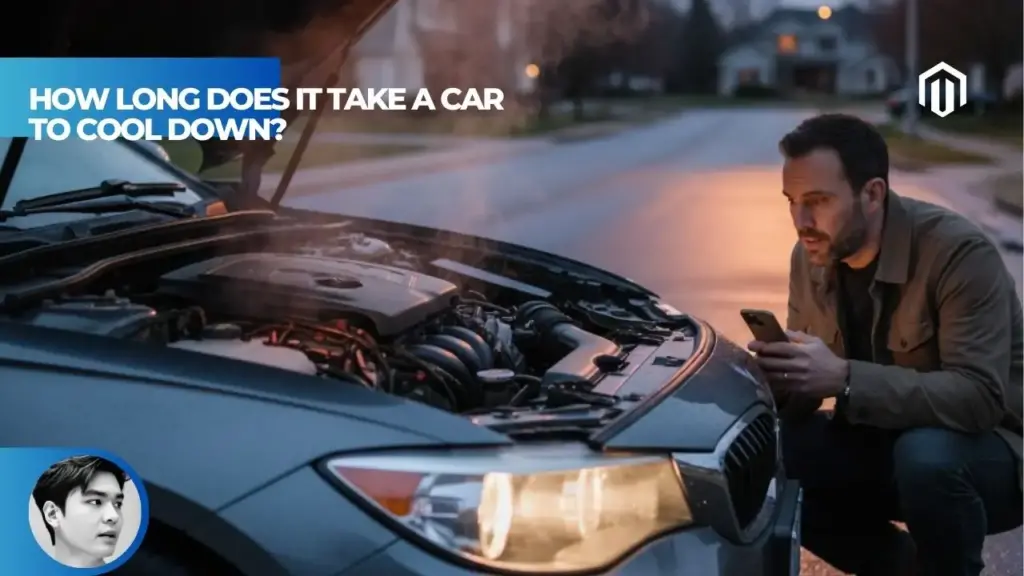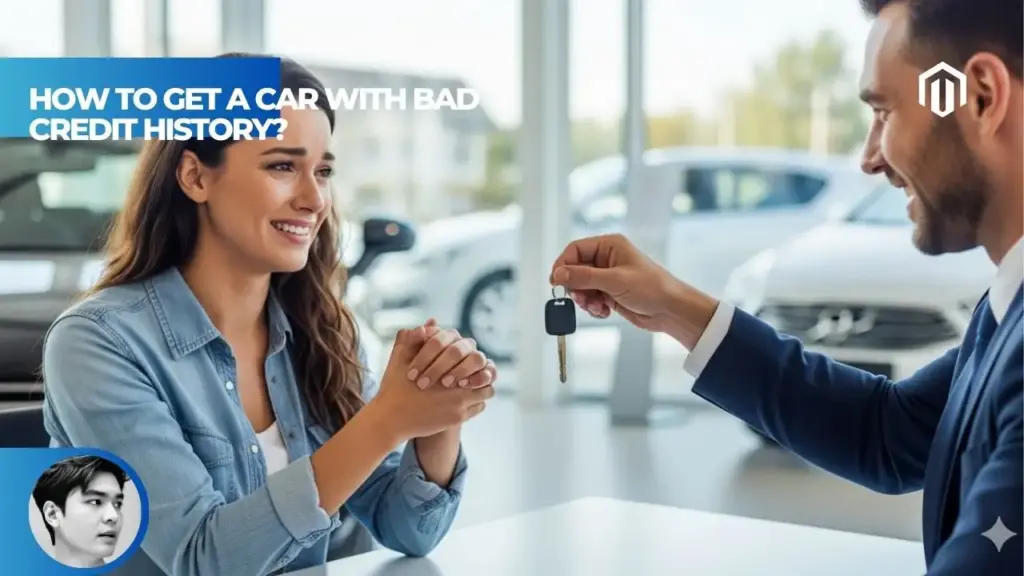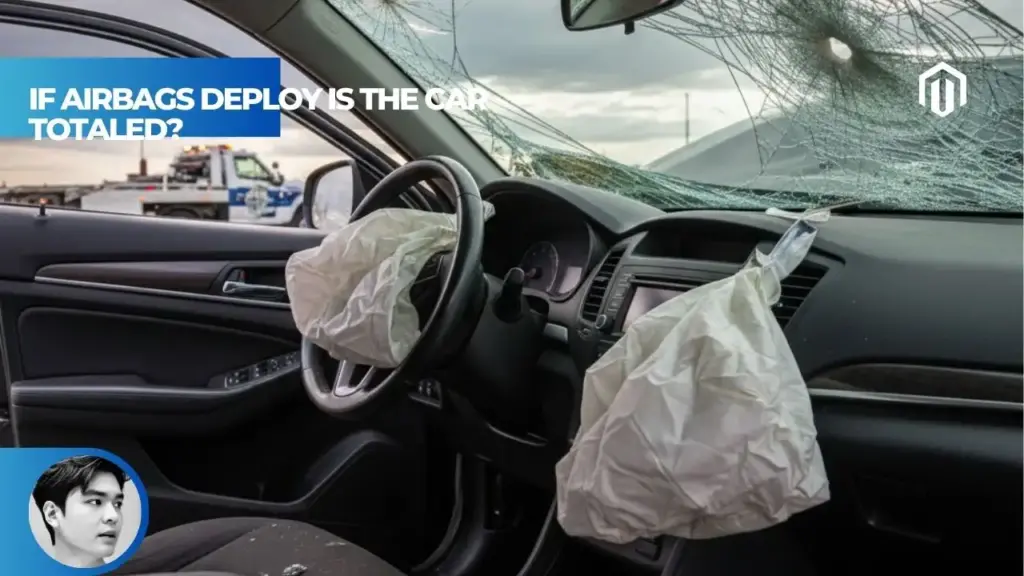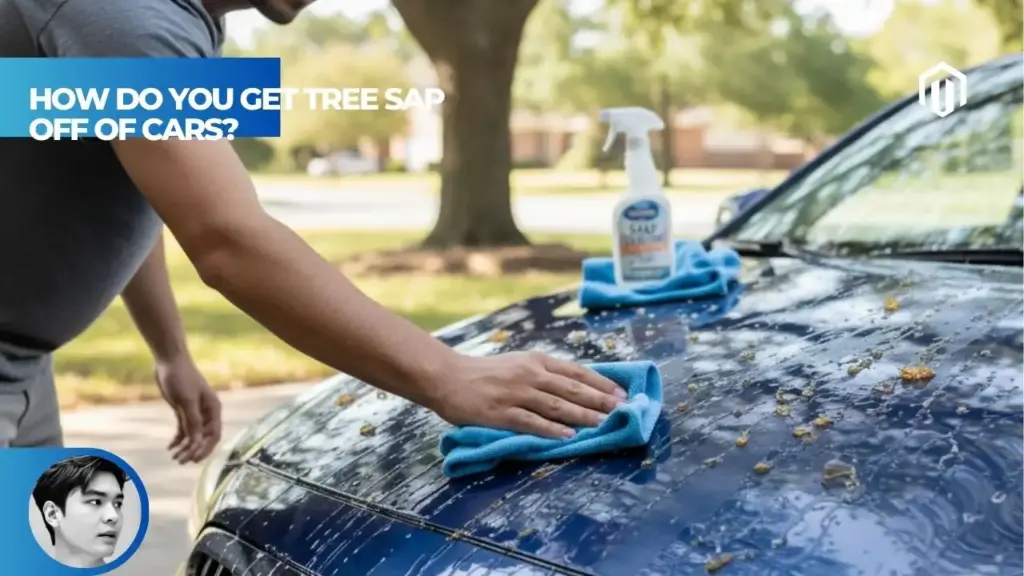You may also like:
- 【Explained】How Long Does It Take to Paint a Car? (A 5-Step Timeline)
- 【Explained】How Long Does a Vinyl Wrap Last on a Car? (The 2025 Durability Guide)
- 【Review】Top 7 Best Ways to Clean a Car After a Body Repair
- 【Explained】How Much Is It to Fix a Car Bumper? Full Cost Breakdown by Damage Type
- 【Explained】What’s the Maintenance Cost for BMW? 10-Year Ownership Averages and Budgeting
Yes, Wrapping a car typically costs $2,500-$5,000 upfront, making it cheaper initially than a professional paint job that ranges from $5,000-$10,000 or more. However, paint lasts 10-15+ years compared to 5-7 years for wraps, making the long-term cost per year comparable depending on your ownership timeline and customization needs.

Cost to Wrap a Car vs Paint Job – Initial Investment
When comparing the upfront costs of wrapping versus painting your vehicle, the price difference is substantial. Understanding these initial investments helps you make an informed decision based on your budget and aesthetic goals.
Average Cost of Car Wrap vs Professional Paint
A professional car wrap averages $2,500-$5,000 for a full vehicle, while quality paint jobs start at $5,000 and can exceed $10,000 for premium finishes[1]. The wrap cost depends on vehicle size, with compact cars costing around $2,000 and SUVs reaching $4,000-$5,000. Professional paint jobs vary even more dramatically, from $3,000 for basic single-stage applications to $15,000+ for show-quality multi-stage finishes.
According to industry data from 2025, the average wrap installation takes 2-5 days versus 1-3 weeks for quality paint work[2]. This time difference reflects in labor costs, with wrap installers charging $3-$5 per square foot for labor, while paint shops bill 40-80 hours at $75-$150 per hour.
Price for Cheap Car Paint Job vs Vinyl Wrap
Budget-conscious consumers often compare entry-level options. A basic paint job from discount chains costs $500-$3,000, while DIY wrap kits range from $500-$1,500[3]. However, these cheaper alternatives come with significant quality trade-offs.
Discount paint jobs typically use single-stage enamel paint with minimal prep work, resulting in orange peel texture and poor durability. Budget wraps using lower-quality vinyl may bubble, peel, or fade within 2-3 years. Autvex recommends avoiding the absolute cheapest options in both categories, as poor results often require expensive corrections.
Breakdown of Wrap vs Paint Cost
Here’s a detailed cost comparison for mid-size sedans:
| Cost Component | Car Wrap | Paint Job |
|---|---|---|
| Materials | $500-$1,500 | $200-$2,000 |
| Labor | $1,500-$3,000 | $2,000-$6,000 |
| Prep Work | $200-$500 | $500-$2,000 |
| Design/Graphics | $0-$1,000 | $500-$3,000 |
| Total Average | $2,500-$5,000 | $5,000-$10,000 |
Is a Full Car Wrap Cheaper Than Paint
Yes, a full car wrap is generally 40-50% cheaper than a comparable quality paint job[1]. This cost advantage increases for custom designs or exotic colors. Chrome wraps cost $6,000-$8,000, while chrome paint applications can exceed $20,000 due to the complex application process.
The cost efficiency becomes even more apparent when considering color changes. Wrapping allows complete color transformation without affecting original paint value, while repainting permanently alters the vehicle. For used cars with good original paint, wrapping preserves factory finish for future resale.
DIY Options and Budget Alternatives
Self-installation and budget services offer significant savings for those willing to invest time and accept potential quality variations. Understanding these options helps determine if the savings justify the risks.
DIY Car Wrap Cost vs Budget Paint Job
DIY wrap kits cost $500-$1,500 including materials and basic tools, while DIY paint supplies run $200-$800[4]. However, the skill requirements differ dramatically. Wrapping demands patience and precision but allows mistake correction, while painting requires spray equipment, proper ventilation, and cannot be easily undone.
A DIY wrap on a sedan requires approximately 250-300 square feet of vinyl at $2-$5 per square foot. Essential tools include heat guns ($30-$100), squeegees ($20-$50), and cutting tools ($50-$100). Paint requires a compressor ($200-$500), spray gun ($100-$300), and safety equipment ($50-$150), plus facility rental if lacking garage space.
Is Wrapping Worth the Cost Compared to Painting
Wrapping proves worthwhile for 85% of consumers seeking temporary customization or paint protection[2]. The reversibility factor alone justifies the cost for leased vehicles or those planning to sell within 5 years. Wraps also enable experimentation with bold designs that might hurt resale value if painted.
Consider your usage patterns: frequent color changers save thousands choosing wraps over repeated paint jobs. Business vehicles benefit from wrap advertising that’s tax-deductible and removable when selling the fleet. However, those keeping vehicles 10+ years may find paint’s longevity more economical long-term.
Labor Time for Paint Job vs Wrap Installation
Professional wrap installation requires 16-40 hours of labor, while quality paint jobs need 40-80 hours plus drying time[3]. This time difference significantly impacts labor costs and vehicle downtime. Wrap installers typically work in teams, completing most vehicles in 2-3 days.
Paint shops require extensive prep work including sanding, priming, and masking that adds days before actual painting begins. Each coat needs proper curing time, extending the process. Modern wraps eliminate these waiting periods, returning your vehicle faster. For those who recently purchased a vehicle, wrapping allows immediate customization without lengthy shop delays.
Durability and Long-Term Value Analysis
Long-term cost effectiveness depends on durability expectations and maintenance requirements. Both options offer distinct advantages depending on your ownership timeline and usage patterns.
Car Wrap Lifespan vs Paint Lifespan
Quality vinyl wraps last 5-7 years with proper care, while professional paint jobs endure 10-15+ years[5]. Premium wraps from 3M or Avery Dennison can reach 7-10 years in optimal conditions, though most need replacement by year 7. Factory paint, when maintained properly, often lasts the vehicle’s lifetime.
Environmental factors significantly impact both lifespans. Wraps in Arizona or Florida may show degradation after 3-5 years due to UV exposure, while northern climates with road salt affect both wraps and paint equally. Garage-kept vehicles extend either option’s lifespan by 30-40%.
How Long Does a Vinyl Wrap Last on a Car
Modern cast vinyl wraps maintain appearance for 5-7 years on average, with premium materials lasting up to 10 years[5]. Calendered vinyl (cheaper option) degrades within 2-3 years, making cast vinyl the only viable long-term option. Matte and satin finishes typically outlast gloss by 1-2 years due to UV resistance properties.
Daily drivers experience faster degradation than weekend vehicles. Highway driving exposes wraps to more debris and UV radiation, reducing lifespan by 20-30%. City driving with frequent washing and parking lot door dings also accelerates wear. Autvex data shows wrapped vehicles driven under 10,000 miles annually maintain appearance 40% longer than those exceeding 15,000 miles.
Durability of Wrap vs Car Paint
Paint generally proves more durable against physical damage, resisting rock chips and scratches better than vinyl. However, wraps offer superior protection for underlying paint, acting as a sacrificial layer[2]. A 8-mil thick wrap absorbs minor impacts that would chip paint, preserving original finish value.
Paint repairs blend easier than wrap patches, though modern wrap repair techniques have improved significantly. Small paint chips can be touched up invisibly, while wrap damage often requires panel replacement. However, wraps resist chemical damage from bird droppings and tree sap better than most paints.
Long Term Cost Wrap vs Paint
Calculating 10-year ownership costs reveals surprising parity:
| Factor | Wrap (10 years) | Paint (10 years) |
|---|---|---|
| Initial Cost | $3,500 | $7,000 |
| Replacement/Touch-up | $3,500 (year 5) | $500 |
| Maintenance | $1,500 | $2,000 |
| Total 10-Year Cost | $8,500 | $9,500 |
Fading and Chipping on Wrap vs Paint
Wraps fade gradually and evenly, while paint can develop uneven oxidation patterns. Quality wraps maintain 85% of original color after 5 years, compared to paint retaining 90-95%[5]. However, paint chips create permanent damage requiring professional repair, while wrap damage is purely cosmetic until replacement.
UV-resistant wraps now rival paint longevity for color retention. Clear coat paint provides excellent UV protection but degrades over time, eventually requiring buffing or reapplication. Wraps maintain consistent appearance until replacement time, avoiding the gradual degradation common with aging paint.
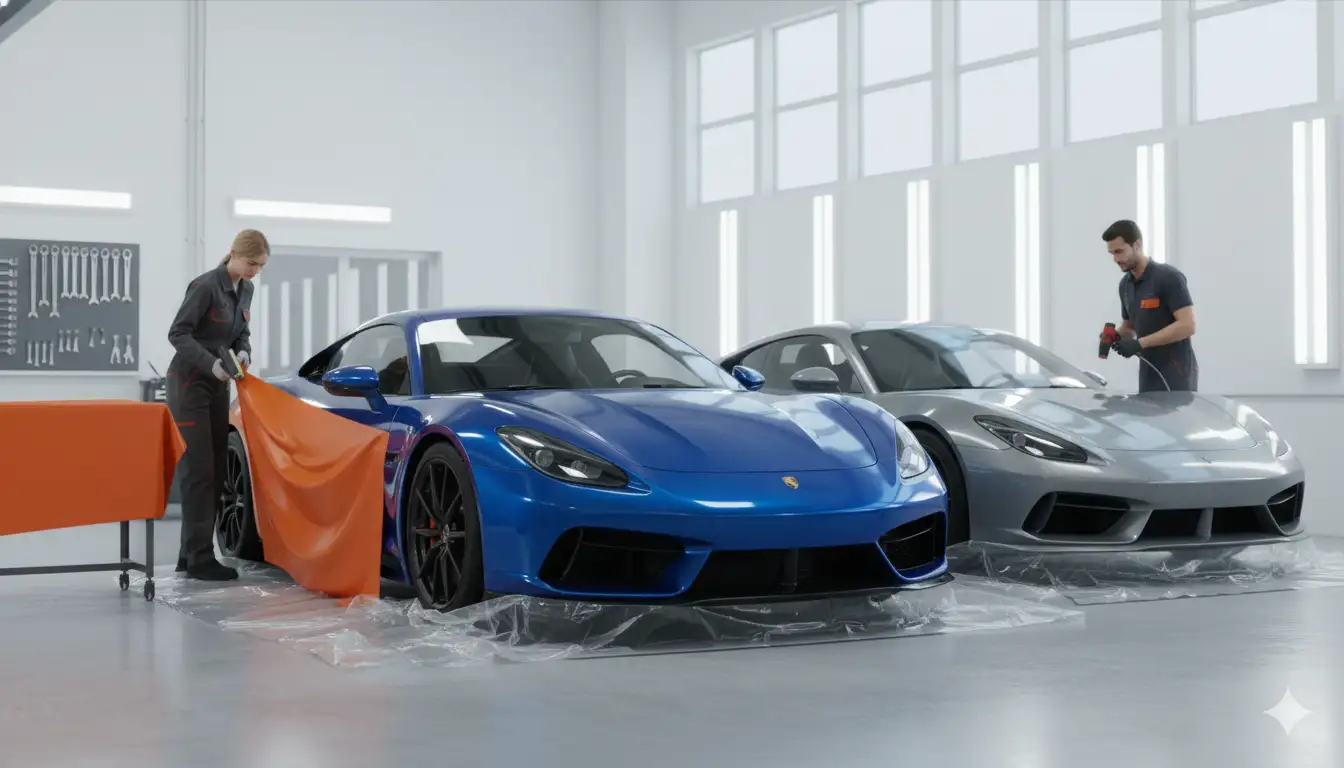
Process, Time, and Installation Comparison
Understanding installation processes helps set realistic expectations for both options. Time requirements and complexity directly impact final costs and results.
How Long Does It Take to Paint a Car
Professional paint jobs require 5-20 business days from drop-off to completion[6]. Basic single-stage paint takes 5-7 days, while show-quality jobs extend to 3+ weeks. The process includes disassembly, surface preparation, primer application, base coat, clear coat, and reassembly.
Each paint layer requires specific drying times: primer (24 hours), base coat (24 hours), and clear coat (48-72 hours). Wet sanding between coats adds additional days. Custom graphics or multi-tone designs extend timelines further. Luxury vehicles like the BMW 5 Series often require extra time for precise color matching.
Time to Install a Full Car Wrap
Full vehicle wraps complete in 2-5 days, with most shops finishing standard vehicles in 3 days[2]. Day one involves cleaning and prep work, days two-three focus on application, and final inspection occurs day four. Complex designs or corrective work may extend to five days.
Partial wraps like window tint combinations finish faster, often same-day for simple applications. Commercial fleet wraps benefit from standardized designs allowing multiple vehicle processing simultaneously. Temperature-controlled environments enable year-round installation, unlike paint requiring specific conditions.
Prep Work for Car Wrap vs Paint
Wrap preparation involves thorough cleaning, minor dent repair, and surface decontamination, typically taking 4-8 hours[3]. Paint prep requires extensive sanding, body work, primer application, and masking, consuming 20-40 hours for quality jobs.
Wraps tolerate minor imperfections better than paint, though significant damage shows through either option. Paint prep cannot be rushed without compromising results, while wrap prep focuses mainly on cleanliness and smooth surfaces. This difference explains much of the cost and time variation between options.
Paint Curing Time
Fresh paint requires 30-90 days for complete curing, though vehicles become driveable after 24-48 hours[6]. During curing, paint remains vulnerable to damage from washing, waxing, or environmental contamination. Full hardness develops over several months, requiring careful treatment.
Wraps require no curing time, providing immediate full functionality. Post-installation heating ensures proper adhesion within hours. This immediate usability proves valuable for commercial vehicles or those needing quick turnaround. Paint’s extended vulnerability period increases risk of early damage requiring correction.
Wrap Removal Cost and Time
Professional wrap removal costs $500-$1,000 and takes 4-8 hours[4]. Quality wraps remove cleanly with heat application, leaving original paint intact. Cheaper wraps or those left beyond recommended lifespan may leave adhesive residue requiring additional cleaning.
Paint removal involves complete stripping and refinishing, costing $3,000-$5,000. Chemical stripping or media blasting damages underlying surfaces, requiring extensive bodywork. This irreversibility makes paint commitment more significant than temporary wraps.
Aesthetic Options and Customization Costs
Design flexibility and customization options vary significantly between wrapping and painting. Understanding these differences helps achieve desired aesthetics within budget constraints.
Custom Design Cost Wrap vs Paint
Custom wrap designs add $500-$2,000 to base prices, while custom paint adds $2,000-$10,000[1]. Digital printing enables unlimited wrap designs including photographs, gradients, and complex patterns impossible with traditional paint. Custom paint requires skilled airbrush artists commanding premium rates.
Wraps excel at incorporating logos, text, and intricate graphics cost-effectively. Paint achieves these effects through expensive multi-stage processes. Business branding, racing stripes, or themed designs cost 70% less via wrapping. Design changes require complete new wraps but avoid paint’s permanent commitment.
Matte Finish Wrap vs Matte Paint Cost
Matte wraps cost $2,500-$3,500 compared to matte paint at $7,000-$15,000[7]. The price differential stems from paint’s complex application requiring specialized products and techniques. Matte paint also demands specific maintenance products and cannot be polished like traditional finishes.
Matte wraps offer consistent finish without paint’s maintenance challenges. Scratches in matte paint require panel repainting, while wrap sections replace individually. Popular luxury SUVs like Audi Q5 and BMW X3 increasingly feature factory matte options, though aftermarket wraps provide similar aesthetics affordably.
Chrome Car Wrap Cost
Chrome wraps range from $6,000-$8,000 for complete coverage, offering mirror-like finishes impossible with paint[7]. Chrome paint alternatives cost $15,000-$25,000 requiring specialized application processes. True chrome plating exceeds $25,000 and involves environmental regulations many shops cannot meet.
Chrome wraps provide similar visual impact with easier maintenance and reversibility. Various chrome shades from silver to gold enable customization paint cannot match affordably. However, chrome wraps show imperfections more than standard finishes, requiring perfect installation.
Color Change Wrap vs Repaint Cost
Complete color changes via wrap cost $2,500-$5,000 versus $5,000-$12,000 for quality repainting[1]. Wrapping preserves original color for resale value, while painting permanently alters vehicle history. Insurance and registration may require updates for painted color changes, while temporary wraps avoid this requirement.
Factory-matched paint costs increase for premium brands. Audi’s exclusive colors or BMW Individual paints command significant premiums. Wraps achieve similar exclusive appearances without permanent commitment or brand-specific costs.
Finish Options Wrap vs Paint
Wraps offer finishes impossible with paint, including color-shift, textured, and printed patterns:
| Finish Type | Wrap Availability | Paint Availability | Cost Difference |
|---|---|---|---|
| Gloss | Yes | Yes | Wrap 50% cheaper |
| Matte | Yes | Yes | Wrap 60% cheaper |
| Satin | Yes | Yes | Wrap 55% cheaper |
| Chrome | Yes | Limited | Wrap only practical |
| Carbon Fiber | Yes | No | Wrap exclusive |
| Color-Shift | Yes | Very Limited | Wrap 70% cheaper |
| Textured | Yes | No | Wrap exclusive |
Quality of Wrap vs Quality of Paint Job
Premium wraps from 3M, Avery Dennison, or HEXIS rival high-end paint in appearance when professionally installed[5]. Modern casting techniques eliminate orange peel and provide paint-like depth. However, close inspection reveals wrap edges at panel gaps, distinguishing from seamless paint.
Paint quality varies dramatically with price point. Budget jobs show obvious orange peel, overspray, and poor coverage. Premium paint achieves glass-smooth finishes exceeding wrap capabilities. The $5,000-$7,000 range represents the sweet spot where paint quality justifies cost over wrapping.
Maintenance, Protection, and Resale Considerations
Long-term ownership satisfaction depends on maintenance requirements and value retention. Both options offer distinct advantages for different ownership strategies.
Does a Wrap Protect the Original Paint
Yes, quality wraps provide excellent paint protection against UV rays, minor scratches, and environmental contaminants[2]. The vinyl acts as a sacrificial barrier, absorbing damage that would otherwise affect paint. This protection proves especially valuable for maintaining resale value.
Paint protection film (PPF) offers superior protection but costs more than decorative wraps. However, color-change wraps provide 80% of PPF’s protection while transforming appearance. Factory paint under properly maintained wraps often looks new after years of protection.
Maintenance for Wrapped Car vs Painted Car
Wrapped vehicles require specialized care but less frequent maintenance overall[8]. Annual wrap maintenance costs approximately $150 versus $200-$400 for paint care including waxing, polishing, and paint correction.
Wrap maintenance guidelines:
- Hand wash or touchless car washes only
- Avoid petroleum-based products
- Use wrap-specific cleaners
- No high-pressure washing near edges
- Indoor parking when possible
Paint maintenance requires regular waxing, clay bar treatment, and occasional polishing. Paint correction for swirl marks costs $200-$500 annually for maintained vehicles.
Repair Cost for Wrap Damage vs Paint Damage
Wrap repairs cost $200-$500 for panel replacement versus $300-$1,000 for paint repair[4]. Wrap sections replace individually without color matching concerns, while paint repairs require blending into adjacent panels for seamless appearance.
Small wrap damage often hides with careful patching, while paint chips remain visible without professional repair. However, extensive wrap damage may require complete rewrap if matching material is unavailable. Paint repairs, though expensive, can be performed indefinitely.
Resale Value Wrap vs Paint
Wrapped vehicles maintain higher resale values when original paint remains protected[2]. Removing wraps before sale reveals preserved factory finish, appealing to buyers preferring original colors. Quality paint jobs may add value if professionally done, but color changes often reduce appeal.
Dealerships typically prefer original paint, offering $500-$2,000 more for unwrapped vehicles with protected factory finish versus repainted equivalents. However, poorly removed wraps leaving residue or damage decrease value significantly. Document wrap installation and maintenance for potential buyers.
Reversible Car Color Change Option
Wrap reversibility provides unique flexibility worth $1,000-$3,000 in perceived value[3]. Lease returns require original colors, making wraps ideal for temporary personalization. Seasonal color changes become feasible, unlike permanent paint commitment.
This reversibility benefits business vehicles transitioning to personal use. Remove promotional wraps without affecting resale value. Experimental designs or trend-following becomes risk-free compared to permanent paint choices potentially dating the vehicle.
Waxing a Wrapped Car
Wrapped vehicles should not be waxed with traditional products containing petroleum distillates[8]. Specialized wrap sealants provide protection without damaging vinyl. These products cost similarly to quality car wax but last longer due to wrap’s non-porous surface.
Ceramic coatings designed for wraps offer 2-3 year protection for $300-$500. This investment extends wrap life while easing maintenance. Compare this to paint requiring annual wax applications plus periodic paint correction. The reduced maintenance partially offsets wrap’s shorter lifespan versus paint.
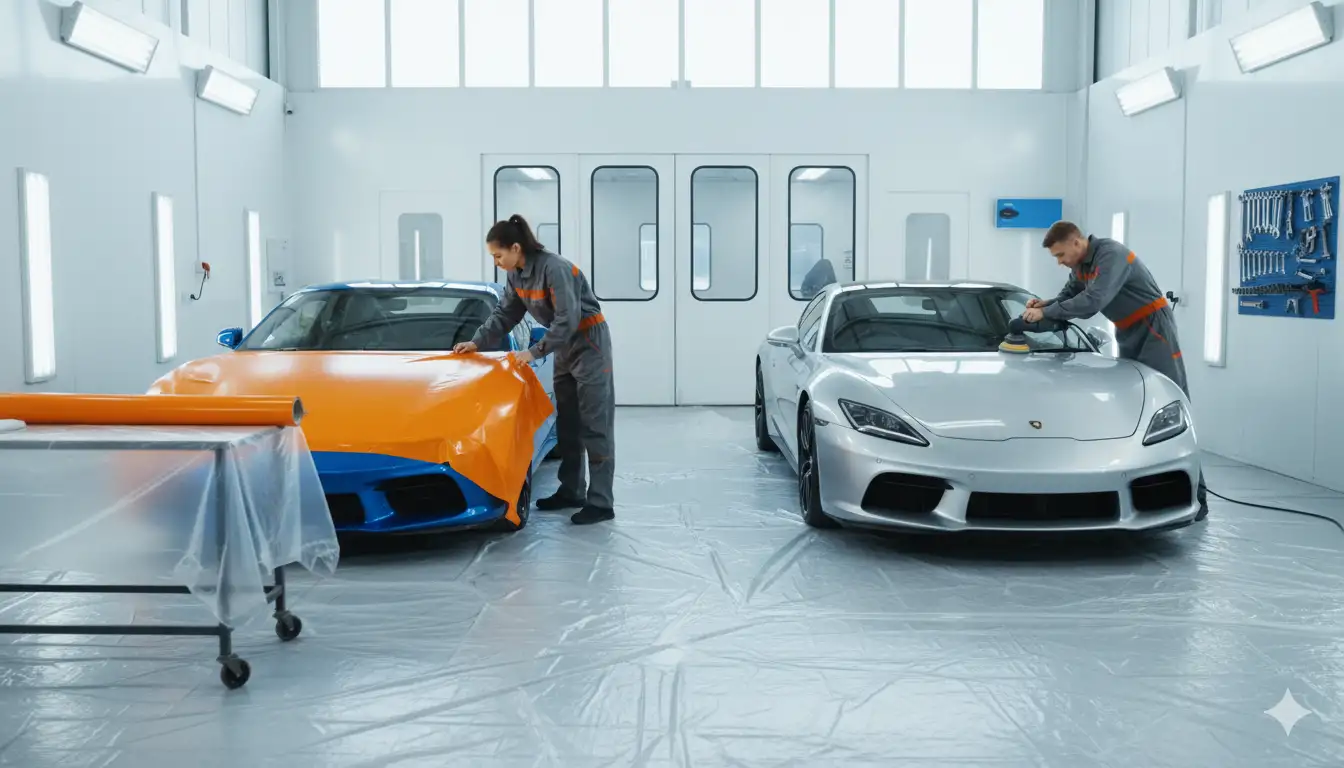
Key Takeaways
- Wraps cost 40-50% less initially ($2,500-$5,000) than quality paint ($5,000-$10,000+)
- Paint lasts 2-3 times longer (10-15 years vs 5-7 years) but costs more to maintain
- Installation time favors wraps (2-5 days vs 1-3 weeks) for faster transformation
- Wraps protect original paint and are reversible, preserving resale value
- Custom designs cost 70% less with wraps versus painted graphics
- 10-year ownership costs are comparable when factoring replacement and maintenance
- DIY wraps offer better results than DIY paint with less risk of permanent damage
Decision Path / Next Steps
Start your decision process by evaluating your specific ownership timeline and customization goals. If you plan to keep your vehicle less than 5 years, wrapping offers the best value with lower upfront costs and paint protection benefits. For long-term ownership exceeding 10 years, quality paint proves more economical despite higher initial investment. Consider that regular maintenance affects both options’ longevity significantly.
Get detailed quotes from 3-4 shops for both wrapping and painting, ensuring they specify material brands and warranty terms. Request to see completed work examples and ask about their experience with your vehicle type. For wraps, prioritize installers certified by major manufacturers like 3M or Avery Dennison. Paint shops should provide detailed preparation descriptions and paint brand specifications.
Factor your local climate into the decision—extreme heat, cold, or UV exposure affects both options differently. Garage parking extends either choice’s lifespan by 30-40%, potentially justifying the higher-cost option. If considering DIY, invest in professional training or start with partial applications before attempting full coverage.
Calculate total ownership costs including initial application, maintenance, and potential removal or touch-ups. Autvex analysis shows the break-even point typically occurs around year 8-10 of ownership. Business vehicles benefit from wrap tax deductions and easy fleet updates, while personal vehicles might prioritize paint’s permanence.
For those still undecided, consider starting with a high-quality wrap to experiment with colors or finishes. The reversibility allows returning to original paint or choosing different customization later. This approach proves especially valuable for new luxury vehicles where maintaining factory originality matters for resale. Document your choice thoroughly, including materials used, installer credentials, and maintenance performed, as this information significantly impacts future value regardless of your selection.
Frequently Asked Questions
Is it cheaper to wrap or paint a car a custom color?
Wrapping is typically cheaper for custom colors at $2,500-$5,000 versus custom paint at $5,000-$10,000+[1]. Wraps also offer exotic finishes like chrome or color-shift at lower costs than comparable paint effects.
How much does a full car wrap cost on average?
A full car wrap averages $2,500-$5,000 depending on vehicle size, vinyl quality, and design complexity[1]. Luxury vehicles and custom designs push costs toward the higher end of this range.
What is the average cost of a good quality car paint job?
Quality paint jobs range from $5,000-$10,000, with show-quality finishes exceeding $15,000[6]. Basic single-stage paint starts around $3,000 but lacks the durability and finish of premium options.
Does wrapping a car ruin the paint underneath?
No, quality wraps actually protect the original paint from UV damage and minor scratches[2]. Proper removal by professionals preserves the paint condition, often revealing well-maintained factory finish.
How long does a car wrap typically last?
Car wraps last 5-7 years with proper maintenance, though harsh climates may reduce lifespan to 3-5 years[5]. Premium materials from 3M or Avery Dennison can extend durability to 7-10 years.
Which lasts longer: car wrap or car paint?
Paint lasts longer at 10-15+ years versus wraps at 5-7 years, but paint is susceptible to chips and fading without protection[6]. Quality paint with proper maintenance can last the vehicle’s lifetime.
Is it possible to DIY a car wrap to save money?
Yes, DIY wrap kits cost $500-$1,500, but require significant skill and time[4]. Professional results are difficult without experience, and mistakes can be costly to correct.
How much does it cost to remove a car wrap?
Professional wrap removal costs $500-$1,000, taking 4-8 hours[4]. DIY removal is possible but risks paint damage if done incorrectly.
Does a car wrap increase or decrease resale value?
Wraps can increase value by protecting original paint[2]. Removal before sale often reveals well-preserved factory finish, appealing to buyers.
How much quicker is a car wrap than a full repaint?
Wraps take 2-5 days versus 1-3 weeks for quality paint jobs, making wraps 60-80% faster[3]. This reduced downtime proves valuable for commercial vehicles.
Can you wrap a car with existing paint damage?
Minor damage can be wrapped over, but major imperfections show through[3]. Repairs before wrapping ensure best results and prevent further deterioration.
What are the pros and cons of car wrapping vs painting?
Wraps: Lower upfront cost, reversible, faster installation, protects original paint, but shorter lifespan[1]. Paint: Permanent, longer lasting, original finish quality, but expensive and time-consuming.
Do custom paint jobs or car wraps offer more color options?
Wraps offer more options including patterns, textures, and finishes impossible with paint, like chrome or color-shifting vinyl[7]. Digital printing enables unlimited design possibilities exceeding paint capabilities.
References
- Metro Restyling. (2024). Is it Cheaper to Wrap or Paint a Car? metrorestyling.com. Retrieved from https://autvex.com/is-it-cheaper-to-wrap-or-paint-a-car
- 10K Wraps. (2025). Cost Comparison Car Wrapping or Painting in 2025. 10kwraps.com. Retrieved from https://autvex.com/is-it-cheaper-to-wrap-or-paint-a-car
- Vinyl Frog. (2022). Is It Cheaper To Wrap Or Paint A Car. vinylfrog.com. Retrieved from https://autvex.com/is-it-cheaper-to-wrap-or-paint-a-car
- UASG. (2023). Car Wrap Vs Paint: Is It Cheaper To Wrap Your Car? uasg.org. Retrieved from https://autvex.com/is-it-cheaper-to-wrap-or-paint-a-car
- Shell Shocked Wraps. (2025). How Long Does a Car Wrap Last? A Comprehensive Guide. shellshockedwraps.com. Retrieved from https://autvex.com/is-it-cheaper-to-wrap-or-paint-a-car
- Proctor Auto Styling. (2025). Automotive Wrap vs. Paint: Which Is Better for Your Car in 2025. proctorautostyling.org. Retrieved from https://autvex.com/is-it-cheaper-to-wrap-or-paint-a-car
- Vinyl Frog. (2022). How Much Does It Cost To Wrap A Car Matte Black? vinylfrog.com. Retrieved from https://autvex.com/is-it-cheaper-to-wrap-or-paint-a-car
- NiceTintz Memphis. (2024). How Long Does a Vinyl Car Wrap Last? nicetintzmemphis.com. Retrieved from https://autvex.com/is-it-cheaper-to-wrap-or-paint-a-car

I am a senior automotive analyst at Autvex. Expert vehicle evaluations, in-depth reviews, and objective analysis helping readers make informed automotive decisions with years of industry experience.

